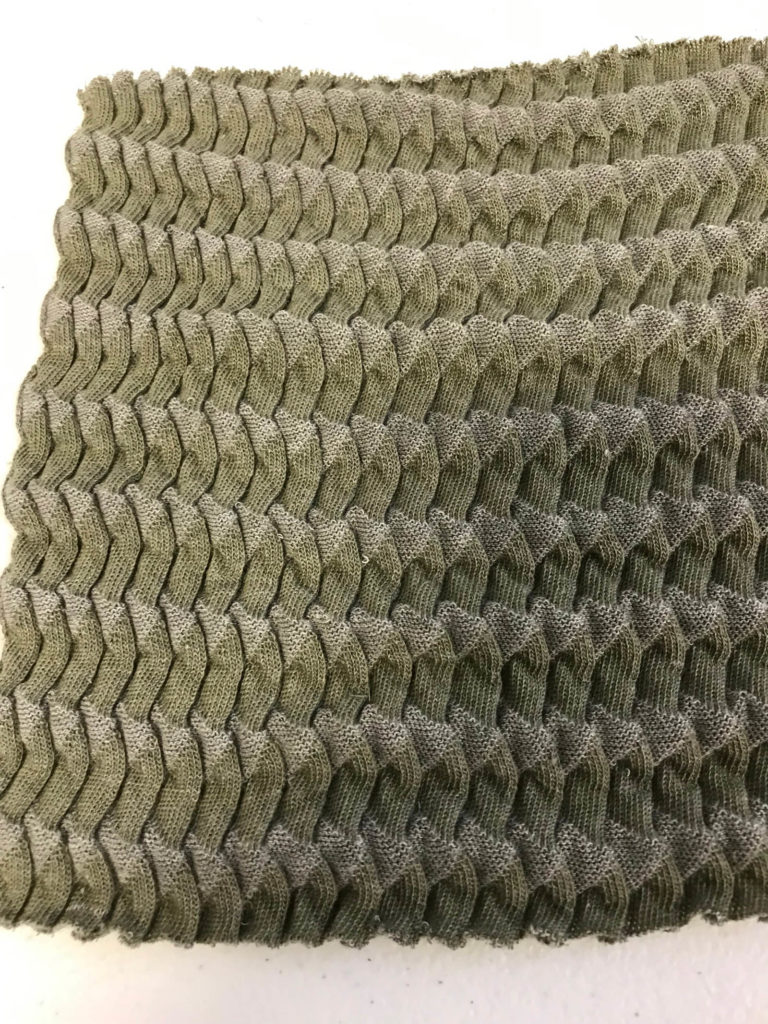
With this year’s Smart Fabrics Summit taking place on the campus of North Carolina State University (NC State), another day of activities was added, which included student demonstrations and tours of the Zeis Textiles Extension complex and the Nano-EXtended Textiles lab (NEXT) at the Wilson College of Textiles on the NC State campus.
Zeis director Dr. Andre West noted in his guided tour of the facility that the university has facilities for manufacturing fiber and yarn, the ability to manufacture a variety of knits and wovens, and to produce various nonwovens, all in their textile complex. Testing and research labs offer additional capabilities for both student and faculty generated projects, as well as making a full range of textile production operations available to the industry. According to West, NC State is the only educational institution in the U.S. that has all these capabilities.
The college’s NEXT lab is a focused space for students to pursue their interests in materials engineering, particularly as it involves the design of smart textile platforms “that enable improved materials integration of sensors, energy harvesting, energy storage and communication devices,” according to the lab’s website.
The NEXT lab uses a “technology innovation through engineering design approach” that includes research in materials, textile electronic systems and student projects that are an integral part of their education in textile technologies. Students presented summaries of projects they are now working on as part of the lab tour.
Student Research Showcase
Meanwhile, a Student Research Showcase was available for attendees to peruse projects underway, with time for unstructured conversations with the researchers. Among them was an advanced, durable textile designed for combat shown by Ph.D. candidate Zoe Newman. In addition to its flame retardance and superior moisture management, the textile has highly stretchable auxetic properties. Auxetic materials do the opposite of more typical materials and get thicker when stretched.
Ph.D. candidate Beth Kirkwood presented her study concerning knitting conductive yarns. Using a novel three-point bending test for yarn, Kirkwood has developed the basis for a new predictive yarn model simulating the knitting process, which includes machine parameters such as speed, stitch length and gauge.
Walaa Enab, a third-year doctoral student in the fibrous and polymer science department, is working on a unique technique for embedding aligned sheets of carbon nanotubes (CNTs) into the interlaminar region of laminated composite structures to examine the CNTs sheets’ ability to improve the transverse mechanical properties.
Graduate research assistant Xiaoqi (Suki) Tang is developing a smart surveillance system for blood flow in textile-based vascular grafts. The goal of her project is to compose a sensor with polyester and conductive yarn via traditional textile methods that will be integrated inside a knitted or braided vascular graft as a weft insertion to monitor blood flow rate in real time.
Marissa Noon, undergraduate research assistant; Robert Seevers, M.S. candidate in Textile engineering; and Ryan Darden, M.S. candidate in textile engineering, are working on a posture alignment sock to address pain and discomfort caused by improper alignment. The project was in collaboration with a startup founded by a physical therapist and a patient. The students created the design of the knit and studied how the sock itself could respond to the wearer to improve posture.
 TEXTILES.ORG
TEXTILES.ORG


